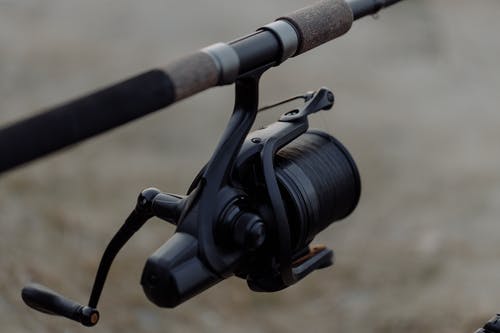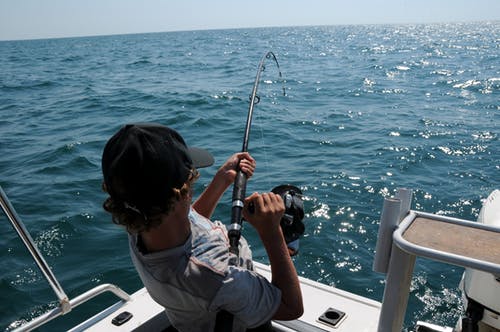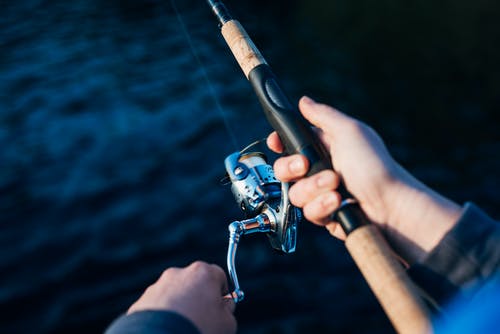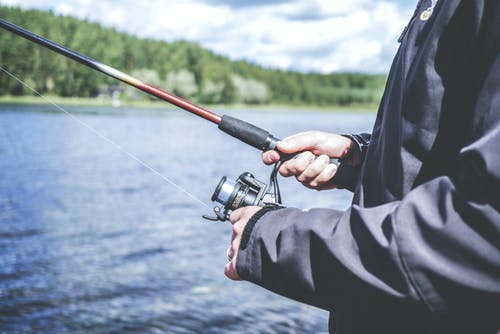If you’ve been fishing for a while, you know how frustrating it is to lose a huge fish to a broken line. This typically occurs when a drag, a mechanism that sets how much resistance a fish feels when it pulls on a line, is not set properly. Luckily, there is a simple way to change the drag. In this article, you will learn how to set drag on conventional reel.
Understanding How To Set Drag On Conventional Reel

As soon as you hear about your particular reel and drag adjuster, check the resistance, and make the appropriate corrections. Then get out of here and catch the one that got away!
How To Set Drag On Conventional Reel: Step One
Determine which kind of reel you’re using. There are three basic types of reels that have a line in it. This article will not get into each one’s pros and cons; instead, you must know what kind you have and where the drag adjustment is located. The spin casting reels have a closed face. Your line is covered with a cone-like cover, and the line feeds out of a small hole in it.
The spinning reels are open-sided. Your line spool will be revealed, and you will be able to watch it spin out. This one appears to be the most exposed. Baitcasting reels look like a combination of an open-and a closed-face reel. The most obvious aspect is that when you cast the thread, the entire line spool will rotate.
How To Set Drag On Conventional Reel: Step Two
Find the drag adjustment. Now that you know what kind of reel you’re using find out where the drag change is located on your reel. Drag adjustment of the spincast is normally next to the handle of the reel. It looks like a star-shaped button, and you can press while you’re playing with a drag. This helps you to hear how well you’re adapting.
The spinning reelreel’s drag change is a circular knob facing out at the front of your line spool. Drag adjustment of the baitcaster looks like a star and is positioned next to the reelreel’s handle. Turn it clockwise will tighten it, and then drag will loosen the counter-clockwise.
How To Set Drag On Conventional Reel: Step Three
Learn to break the power of your rows. Look at the box where your line came in. It should explicitly state how much resistance your line can withstand without splitting.
This is going to tell you what your target drag should be. Drag should always be no more than 25% of your resistance to breaking power. To find out drag, just divide your braking power by 4. The effect is what you need to set your drag.
How To Set Drag On Conventional Reel: Step Four
Get a scale, guy. Now that you know what your drag is supposed to be, you’re going to need to see where your drag is actually set. You may use either the optical scale or the spring scale. Both of them have a hook at the end to which you tie your thread.
How To Set Drag On Conventional Reel: What To Do

Do you want to know how to set drag on conventional reel? Here’s what you should do.
A. Step One
Assemble a rod. Set up your rod and thread the line as if you were really using the rod. Be sure to thread the line through all the guides in order to get an accurate reading.
B. Step Two
Tie your line down to the size. At the end of your digital or spring scale, you’ll need to tie it tightly to the hook. Make sure that the line can’t fall off when the scale is drawn.
C. . Step Three
Place the rod. Keep your rod at an angle of 45 degrees. It’s a good idea to make a buddy keep your rod or the scale. Keep the scale vertical so that there are a hook and a line at the end.
D. Step Four
Pull it down on the scale. At first, your line won’t do anything but bend down with your weight. Then, you should note that the drag begins to slide, and the line is extended. Look at the scale and take a sample as soon as this occurs.
E. Step Five
Only change the drag. Look at where the drag is and what it’s meant to be. Use the drag adjustment button on your reel to tighten or loosen as desired. Check the drag on a scale.
Drag Dynamics

Here at Accurate, we get a lot of phone calls from customers asking product questions, a lot of fishing questions, but one fairly popular question is “How to set a drag.”
Setting drags on a reel is pretty straightforward once you know the right way to do it. It’s important to understand how the rod you’re using comes into the equation to get an accurate drag configuration, no pun intended for you. We usually do when we’re about to fish for the day to make sure you have a spring scale of at least 25 lbs, and if you’re a large fisherman, you’re going to catch 50 lbs.
At the black stop, the strike is clearly visible. Complete is the next move by depressing the black button and heading forward.
Depending on the line’s breaking strength, your drag will be set to 1/4 to 1/3 of that amount. For example, if you have a 40 lb fishing braid, your drag setting would be between 10 to 13 lbs. What kind of strike? A strike is a button you want to see as your lever moves forward and stops before pressing it down and going completely. If you’re fishing for a drag star, you’ll have to take a few turns to see where you’re going to find a magic number.
Mind that you can’t loosen or tighten the star after you’ve set it, or you’ll have to do it again to find your environment. The lever drag reels will give you a built-in stop that could adjust a few pounds when you take it out of gear and put it back in gear against the restart you’re going to have to do with the star drag set up.
Things To Know
To set the drag on a private boat, we take the whole combo, roll on a line rod through the guides (note keep all the knots out of the guides while setting the drags) and create a loop at the end of the line. Put a drag on the reel to start, then put the drag scale in the circle, and pull down the line that moves through the guides. Heat the drag by doing this several times before you start looking at the first drag settings. If you have a 40 lb line on the reel, and the scale says it has 8 lbs, note that we set the drag to 10 to 13 pounds of drag.
Pull the lever down, drag a half-turn clockwise, then force the lever up to kick, and pull the line back through the guides to read. Typically, we do it a few times to make sure the drag reading is consistent. Until you have reached the desired drag setting, do not press the drag knurled button anymore—slower, less forgiving reel, which places the heat on the angler versus the fish.
Why are we setting up a drag on the rod? The rod and the reel are one entity, and the rod’s movement will affect the drag as the line comes out of the tip of the rod. A heavier action rod (fast tip, almost shuts off) will raise the pressure so that the drag setting feels like it’s high.
More Information

A more parabolic rod with a medium tip and a gradual bending spine eliminates the strain from the ass of the rod and spreads it through the rod and back to the fish. This is quite similar to the fulcrum and the levered example, the rod being the lever and the hand or the rails being the fulcrum. The same drag setting on the reel with the two separate action rods makes a big difference.
Note with the advent of the braid (no stretch line). The rods are the only way to compensate for the added pressure, so talking about drags is crucial to make sure people understand with quick top shots, the rod needs some kind of movement, so you don’t fish in pain. Faster tip with slower spine bending to the foregrip. More tolerant for anglers who can not withstand the sun.
The last thing to remember is the dynamics of a full line spool and a half line spool with a fish on it. You’ll set your drag to your desired drag settings with a full line spool, 10 to 13 pounds, as in our example. If you hook a good fish that burns half the line spool, the spool’s dynamics losing half its diameter will raise the drag by double.
If we’ve got a drag set of 10 to 13 pounds, that’s 20 to 26 pounds. It is very important to keep this important “fact” in your mind. A lot of people get excited and want to drive the drag forward, but actually, it’s necessary to slowly get back off the drag to get back into the “comfort range” drag.
Spring Scale For Correct Drag And Drop Settings
This is the key to remembering, particularly when targeting large fish that take long distances. With this one drag shift, we really like to fish rods that are faster to medium action with a slow tapering spine. With these rods, you’ve built up a protection factor to help compensate for a rise in drag, and any wild head shakes a fish might do under pressure. You need to think that the rod is like a spring under pressure, that once it is loaded, it has kinetic energy working to its advantage, and that the right action would work in your favor by placing pressure on the fish under the drag of the reel.
When bent, it will take the pressure off you and add it to the fish. This is the main fact that a lot of people are missing. Heavier action rods when you’re standing up don’t necessarily work for you, but they can put a lot of pressure and cause pain on a fish after a while—anything to note that gives you an extra edge in the war game.
How To Adjust The Drag Of Traditional Reels

The simplest way to set the drag on a spinning reel or spin-cast reel is to test it first by using your hand to pull it directly above the reel on your line.
Tighten the drag on your spinning wheel by turning the front drag control button a few clicks to the right when the line pulls out too quickly. If it’s too tight, drag by turning the crank a few clicks to the left.
Closed face spincast models typically have a top-set roller drag adjustment mechanism. If you don’t feel like you can measure the force correctly, a small spring scale can aid, such as those used in Boca Grips or other fish handling devices used in catch and release.
Hold your rod at an angle of 45 degrees and hook the weight. For better results, drag settings should be able to carry a third to half of the line’s weight before moving. It’s easier to make your drag too loose and fight the fish a little longer than to have it too tight and to break away from the big one.
What Is A Conventional Reel?
Used for freshwater, offshore, and inshore saltwater fishing, conventional reels are popular with a wide range of anglers and are available in a variety of sizes. These versatile reels are suitable for a variety of fishing techniques, including casting jigs, trolling, deep-drop fishing, kite fishing, pier fishing, and more.
Advantages To Conventional Reels
Conventional reels offer a simple, proven design that works particularly well to attract large or deep inhabited fish. While large reels hold a lot of high test lines, making them a good choice for big game fishing, conventional reels are offered in a variety of sizes, making them suitable for many different types of fish. Many reels are equipped with harness lugs for an offshore or a large game angler for attaching a fighting belt.
Conventional reels generally have lower gear ratios than baitcasting and spinning reels, which means that the spool will crank slower but will also have a higher torque for pulling large fish. Two-speed reels offer the best of both low gears for more torque and a high gear for faster line retrieval. Since conventional reels are mainly used for ocean fishing, anti-rust bearings are generally standard equipment to prevent saltwater corrosion.
Disadvantages Of Conventional Reels
While conventional reels perform well for many types of fishing, there are a few drawbacks to keep in mind. Many do not include a level-wind feature, which means that when reeling inside, you have to physically push back and forth on the line with your thumb to ensure that the line winds evenly on the spool, which can be difficult for beginners.
Conventional reels are also more difficult to cast because they do not have a centrifugal or magnetic braking system to reduce backlash like baitcasting reels. Also, keep in mind that unlike spinning reels, the handle on a conventional reel can not be swapped from one side to the other, meaning that the hand you prefer to retrieve will be one of your first narrowing criteria when selecting a reel.
Parts Of A Conventional Reel

The reel’s gear ratio shows how much the spool rotates with a single rotation of the handle. The reel with a gear ratio of 3.1:1 spins the spool 3.1 times with one turn of the handle. Reel requirements will also list the line’s speed that shows how many inches of the line is retrieved for one rotation of the handle. Check both of these specifications when choosing a reel because the line’s speed depends on both the gear ratio and the diameter of the spool, meaning that the higher gear ratio is not directly connected to the higher speed of the line.
Since traditional reels also have larger spools, they can reach high line speeds with relatively low gear ratios. Two-speed reels offer the best of all worlds, with a low gear providing more torque for larger fish and a high gear ratio providing higher speed.
1. The Wind Level
Level wind mechanisms ensure that the line wraps on the spool equally without piling up at one point, which can stop the reel from spinning. Without a level breeze, the angler must direct the line back and forth with his thumb. Some anglers feel that the wind level is unnecessary when using a braided line because it appears to lie on the spool pretty well on its own.
Monofilament, on the other hand, demands a great deal of attention to the spool evenly; so if you choose to use monofilament, you might suggest a level wind reel instead.
Some surfcasting fishermen shy away from level wind reels because salt or sand blowing into the mechanism will jam the level wind and bring an early end to the day of fishing. Some anglers assume that the level winds generate friction on the line when casting, resulting in short castings.
Although we could argue the benefits and drawbacks of level wind all day long, much of the decision comes down to personal preference. Some anglers love the extra touch with the reel, and perfecting a way to direct the line back to the spool can be a source of pride for many. Some anglers tend to focus less on the line and more on the fish at the other end.
2. Line Counters
Line counters allow you to consistently drop your bait to the same depth and remain in the strike zone, which can lead to more capture. Many traditional reels have built-in line counters that are helpful for trolling or deep-water fishing.
3. The Power Of The Line
Fishing line intensity is quantified in pounds and is called a line test. The reel’s line capacity is the maximum length of the line that can be used without overloading the reel. The fishing line diameter increases along with its power, which means that the higher test line takes up more room on the spool. For example, a reel holding 160 yards of 30-pound test monofilament can only carry 120 yards of the 40-pound test or 100 yards of 50-pound test. Most reel manufacturers list the line capacity for both monofilament and braided lines. In general, the braided line capacity is higher than the monofilament.
This is because the braided line is made of braided or woven materials such as Dacron and Spectra fiber, which can achieve a higher test in smaller diameters than nylon. When choosing a reel, consider the size of the fish you want to capture and match the line’s ability accordingly. See our West Advisor on Picking Fishing Line for more details on the fishing line.
4. Power Help
Power-assisted reels save time and reduce the exhaustion of anglers. They are also used when deep-drop fishing to quickly retrieve heavy sinkers and search bait or kite fishing to reel in heavy winds. Another use for power-assisted reels is daytime swordfish fishing, mostly found at depths of 1,500 feet or more. Don’t think the power-assisted reel would take all the sport out of fishing, as many features a manual crank that allows you to play unaided fish at any time.

5. Lever Or Star Drag
All fishing reels have an adjustable drag consisting of an adjustment point, and metal drag washers usually separated by carbon fiber or felt washers to minimize friction. Drag moderates how much energy you can bring on the line before the spool slips and lets out more line. This helps the angler set the reelreel’s drag below the line test to prevent breaking the line when playing a catch.
Too little drag won’t tire the fish enough, though, and might cause the fish to make a big run out of a lot of line in the process. Lever drag systems are common on heavy saltwater reels because the angler can easily switch between different drag settings for different catch portions. Lever drags usually feature free spool, bait, hit, and max setups.
6. The Ball Bearings
More ball bearings are generally better, but the quality of the bearings is also significant. Since traditional reels are intended for use in saltwater, anti-rust or shielded bearings are also standard equipment.
7. Anti-reverse
An anti-reverse lock is a ratchet-and-dog combination that allows a line to be pulled in but does not allow a line to be drawn out and is useful when trolling. When the bait or lure is let out and drops back to the trolling distance, the lock is snapped on before placing the rod in the holder. The bait is placed against the drag brake, which is lower than the breaking line pressure. When a fish hits, the pull overcomes the drag resistance, but the brake tension is adequate to change the hook. The angler takes over from there to play and land the catch.
8. Match The Reel With The Rod
If you already have a rod that you intend to use, make sure your new reel is compatible. A single rod and reel combo would not work with all applications, but the reel and rod must fit each other. Like the reels, the rods are graded for various line tests and use a higher test line than the rod is rated to be able to damage or break the rod. Many traditional rods are rated for higher test lines and good for deep-sea fishing or trolling.
Longer standard rods are rated for a lower test, but they also have more rod action and less force to prevent tearing the hook out of a soft mouth fish. The takeaway is your preference of reels that don’t come down to considering the reel alone. Instead, choose the combination of the reel and the rod that will fit better for your fishing style. To simplify this process, we give already assembled rod and reel combos for various types of fishing and species.
A heavier action rod will raise the strain on you when you fight a fish, so your drag setting will feel like it’s higher than a more parabolic rod with a medium tip and a slow bending spine. Braided lines do not extend like a monofilament, so keep your line form in mind when setting a drag.
Final Words
Your rod is like a spring under pressure while a fish is on it. When primed, it has kinetic energy working to its advantage, and with the right movement, it works to your advantage by placing pressure on the fish under the reel’s drag. After it’s twisted, it’s going to take the pressure off you and add it to the fish.
In total, some anglers estimate their drag settings by pulling the line off the reel to gauge the voltage. However, unless one has developed a technique through years of fishing experience, one can play it safe and will only have to use a scale to do the correct drag setting before going underwater.


